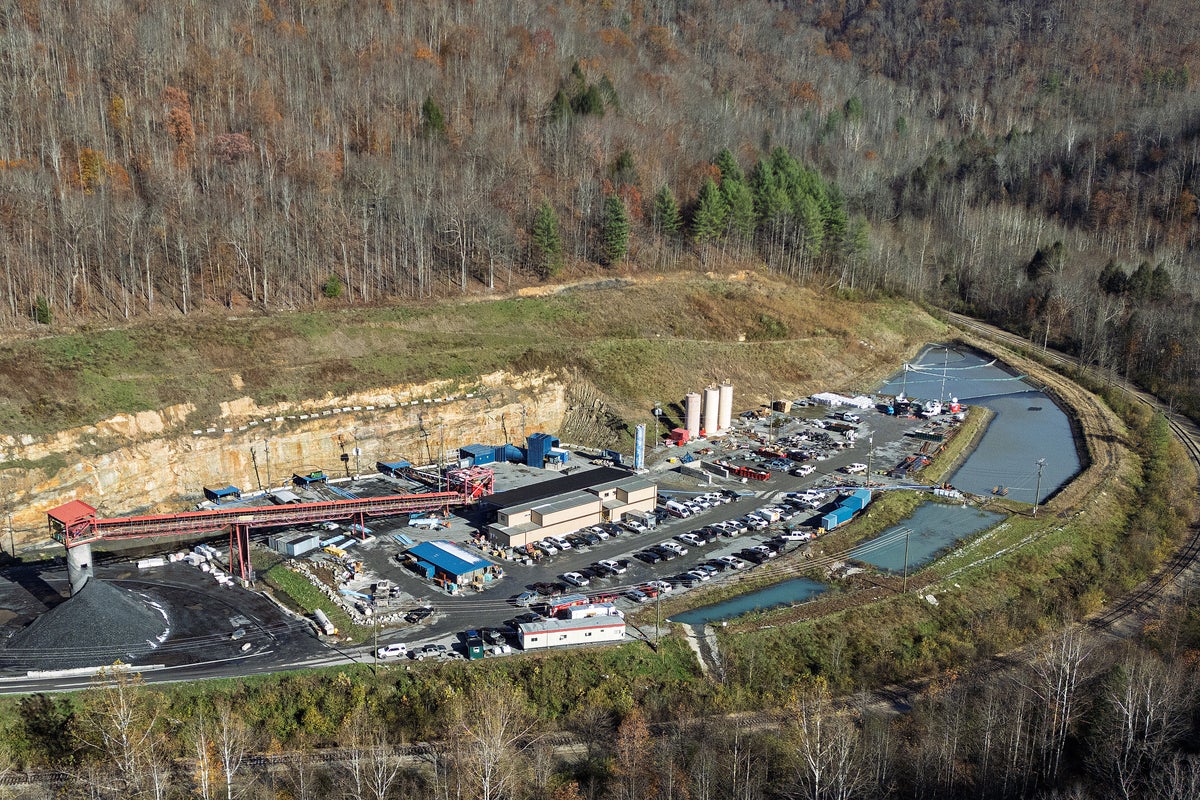
The body of a coal miner has been found six days after he got trapped underground in complete darkness in a flooded mine.
The desperate search for foreman Steven Lipscomb began Saturday in southern West Virginia but crews struggled to make entry into the flooded mine.
A two-man crew found his body early Thursday after finally getting inside the mine, Gov. Patrick Morrisey said.
The death is the third at an Alpha facility in West Virginia this year. Both of the others occurred in nearby Raleigh County: An elevator being tested struck a miner on a first-floor platform in August at Alpha subsidiary Marfork Coal’s processing facility, and a coal seam fell on a contractor in February at Alpha’s Black Eagle underground operation, according to the U.S. Mine Safety and Health Administration.
Six-day rescue mission
Crews had been hard at work trying to enter the flooded mine and save Lipscomb, who was stuck about 3,600 feet below ground inside the Rolling Thunder Mine.
“I think people are doing everything imaginable,” Morrisey said Wednesday before the tragic update. “There’s no quit in anyone here.”
An extra pumping unit was added to the lineup Wednesday night, as Morrisey said that the water levels inside the mine “have yet to reach the point where entry is possible.” Machines had been pumping out water at a rate of 6,000 gallons a minute, which is enough to fill an Olympic-sized swimming pool in under two hours.
Mining crews hit a pocket of water they were unaware of Saturday while working about three-quarters of a mile into the mine, which is located near Belva, about 50 miles east of the state capital of Charleston.
The mine flooded after an old wall “was compromised,” and multiple state agencies were involved in the response, Morrisey said.
Other miners were accounted for after the accident was reported. Morrisey said he had no estimate on the number of crews working on the rescue effort inside the mine, but “obviously, there are a lot of machines pulling the water out.”
“There’s a lot of water that’s been drained, but there’s also a massive amount in there that still needs to be drained,” he said, estimating that the water level was dropping about one inch per hour.
To aid in the efforts, holes were drilled in the mine and dive teams explored potential areas in the water where air pockets might exist, the governor said. The National Cave Rescue Commission provided surplus Army phones attached to wires that can travel great distances to enable for better underground communication.
The United Mine Workers union also sent its safety experts to the nonunion mine.
“We are all coal miners, and we all care about the safety and health of each other,” union President Brian Sanson said in a statement.
Rolling Thunder is one of 11 underground mines operated in West Virginia by Tennessee-based Alpha Metallurgical Resources Inc. The company also operates four surface mines in the state, as well as three underground and one surface mine in Virginia.
Morrisey said the abandoned mine next to Rolling Thunder had been in operation in the 1930s and 1940s.
A report prepared in February for Alpha by an engineering consulting firm, Marshall Miller & Associates, said the area had been “extensively explored” by previous mine owners, generating “a significant amount of historical data” that Alpha examined in assessing its potential for producing coal.
The same report says that the Rolling Thunder coal seam runs along and below the drainage of TwentyMile Creek, but said there were “no significant hydrologic concerns” about digging for more coal in the extensively mined property.
The region is known both for its coal seams and tourism. The nearby Gauley River is popular for its fall whitewater rafting season, and the picturesque New River Gorge National Park to the south is the nation’s newest national park.
The nearest business to the mine in the rural, sparsely populated area is a convenience store about 15 minutes from the winding road leading to the mine. Two businesses about 30 minutes away have supplied food to the rescue crews, and Nicholas County Commissioner Garrett Cole said the mine company also brought in a food truck.
“Miners are part of the family,” Morrisey said. “They’ve contributed so much to West Virginia. This is part of the fabric of our state. When times are tough, people step up and deliver. I think that’s what’s happening here.”
Cole reminded worried residents of a 1968 accident in the same county in which miners working for Gauley Coal and Coke at Hominy Falls accidentally tunneled into an unmapped abandoned mine nearby, flooding their operation. Four men died, but 15 miners were brought to the surface after five days and six others further into the mine were rescued after 10 days.
In 2002 in southwestern Pennsylvania, nine miners were rescued after spending more than three days trapped in the flooded Quecreek Mine.
